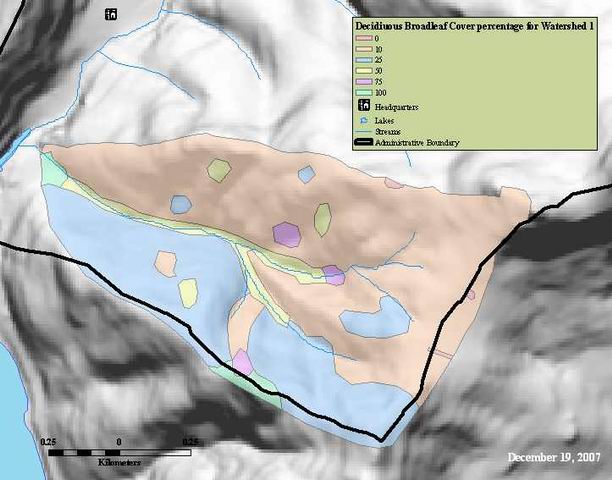Deciduous broadleaf cover in 1979 for Watershed 1, Andrews Experimental Forest
Shapefile

Tags
history, vegetation
modeling, Blue River Watershed, Oregon, Willamette Basin, Andrews watershed 1, vegetation,
HJ Andrews Experimental Forest
To document the history of vegetation classification for watersheds 1, 2, and 3, pre and post harvest.
Vegetation history classification for watersheds 1, 2, and 3 (1959-1990), Andrews Experimental Forest. Photos were interpreted for hydrologically relevant vegetation types (conifer, broadleaf, grasses and bare soil) and forest age class was determined for each year (1959, 1962, 1967, 1972, 1979, and 1990). Vegetation data for functional groups (conifer, evergreen broadleaf, deciduous broadleaf) was aggregated from species data available in TP73 for the long term vegetation plots in Watershed 1.
There are no credits for this item.
While substantial efforts are made to ensure the accuracy of data and documentation, complete accuracy of data sets cannot be guaranteed. All data are made available "as is". The Andrews LTER shall not be liable for damages resulting from any use or misinterpretation of data sets.
Extent
West -122.258716 East -122.237003 North 44.208586 South 44.198469
Maximum (zoomed in) 1:5,000 Minimum (zoomed out) 1:150,000,000